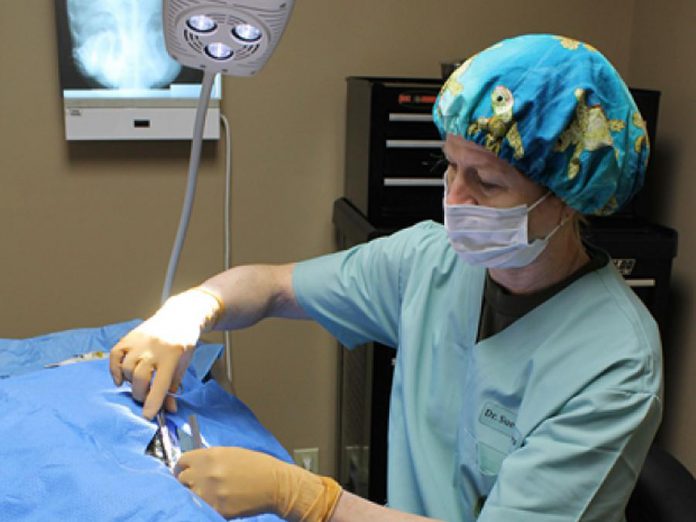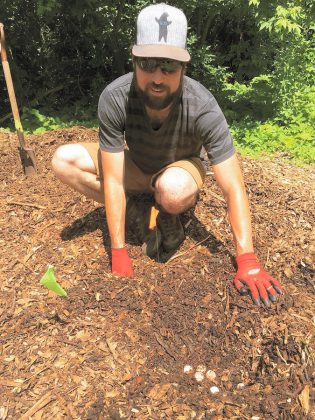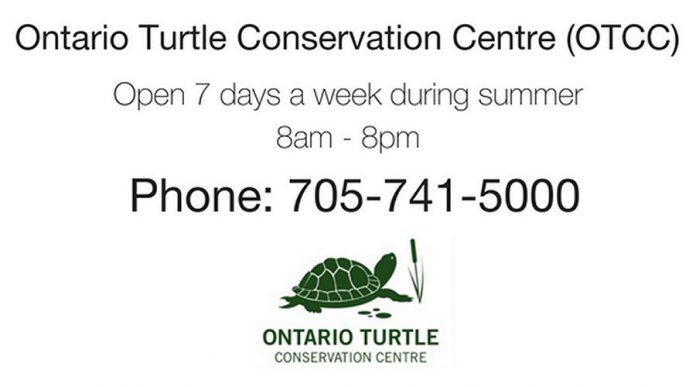
When driving along rural roads between May and October, you may see turtles on the move, crossing roads, and sometimes even laying eggs along the roadside. Since roads are a dangerous setting for these slow moving reptiles, one might wonder, why would a turtle cross a road?
According to Donnell Gasbarrini, Programs Manager at the Ontario Turtle Conservation Centre in Peterborough, turtles cross roads for a few different reasons.
“Turtles may move in search of better habitat and to find more food,” he explains. “Males will move across roads in search of mates and females will move across roads while searching for a nesting site to lay their eggs.
“Many roads in Ontario go directly through wetlands, splitting a previously continuous habitat in half. Turtles are great at climbing and are quite persistent; they will do whatever they can to access the needed elements of their habitat.”
For example, female turtles need to lay their eggs in sand or gravel that is exposed to the sun. Roadsides can be appealing to turtles because they often meet these habitat requirements.

In Ontario, there are eight different species of turtles, seven of which are considered Species At Risk under the Endangered Species Act. Our largest resident turtle, the Snapping Turtle, is considered a species of Special Concern. This means that known threats like being hit by a car, along with their unique biology, can lead to declining species numbers.
When you also consider that female Snapping Turtles only start laying eggs when they are 15 to 20 years old, and that most of the eggs and young are eaten by predators, conserving adult turtles is important to the species’ survival.
Some other turtle Species At Risk in Ontario are the tiny Musk Turtle and the Blanding’s Turtle. The only turtle not listed as a Species At Risk is the Painted Turtle, which is recognizable by its iconic red and yellow markings.
In Peterborough and the Kawarthas, there are many places where you can observe turtles in the wild.
“If you are a keen turtle watcher and have access to a canoe or kayak, you can head to the outlet of the Indian River in Keene or the mouth of the Otonabee River,” says Erin McGauley, Watershed Biologist at Otonabee Conservation.

“Both areas offer excellent viewing opportunities. By bike, the mouth of Sawyer Creek on the Rotary Trail just south of Lakefield provides a great vantage point where at least four at-risk turtle species may be seen.”
McGauley further advises that, if you do see turtles, be a citizen scientist and record them in the Ontario Reptile and Amphibian Atlas (ORAA) through the new ORAA smartphone app or online at www.ontarionature.org.
Gasbarrini explains that turtle observations can help scientists monitor their populations.
“Turtles play an integral part in maintaining the health of Ontario’s wetlands,” he says. “They provide a food source for animals when they are young, and they eat a varied diet including insect larvae and carrion in the wetland. Wetlands are incredibly important to us as they naturally filter our water, keeping it clean for swimming, fishing, and drinking.”
If you do see a turtle on a road, here are a few steps you can take to help it across:
- Stop to help the turtle cross the road — only if it is safe for you to do so.
- With most turtle species, you can simply pick up the turtle gently by holding it under its belly between its front and hind legs. Never pick up a turtle by the tail, as this can damage its spine. For Snapping Turtles, you can hold the turtle between its back legs at the back of the shell only; otherwise, you may want to use a shovel to gently lift and carry the turtle. Be aware that Snapping Turtles can react to your movements very quickly.
- If you note any injuries to the turtle, call Ontario Turtle Conservation at 705-741-5000 and arrange to take the turtle in for care. The Centre can advise you on how best to transport the injured turtle.

If you find an injured turtle, call the Ontario Turtle Conservation Centre at 705-741-5000. - If the turtle is not injured, make sure the road is clear, and carry the turtle across the road in the direction it is facing. While this may not always make sense to us, the turtle knows where it wants to go. If you move the turtle backwards, it will likely attempt to cross the road again once you have left.
- Report your turtle sighting to the Ontario Reptile and Amphibian Atlas (smartphone app or at www.ontarionature.org).
- Make sure to wash your hands with soap and water after handling a turtle. Turtles commonly carry the Salmonella bacteria on their outer skin and shell surfaces.
You can help us protect our turtle species that are so important to our natural environment by following these few steps and by learning about Ontario’s turtle species.


























